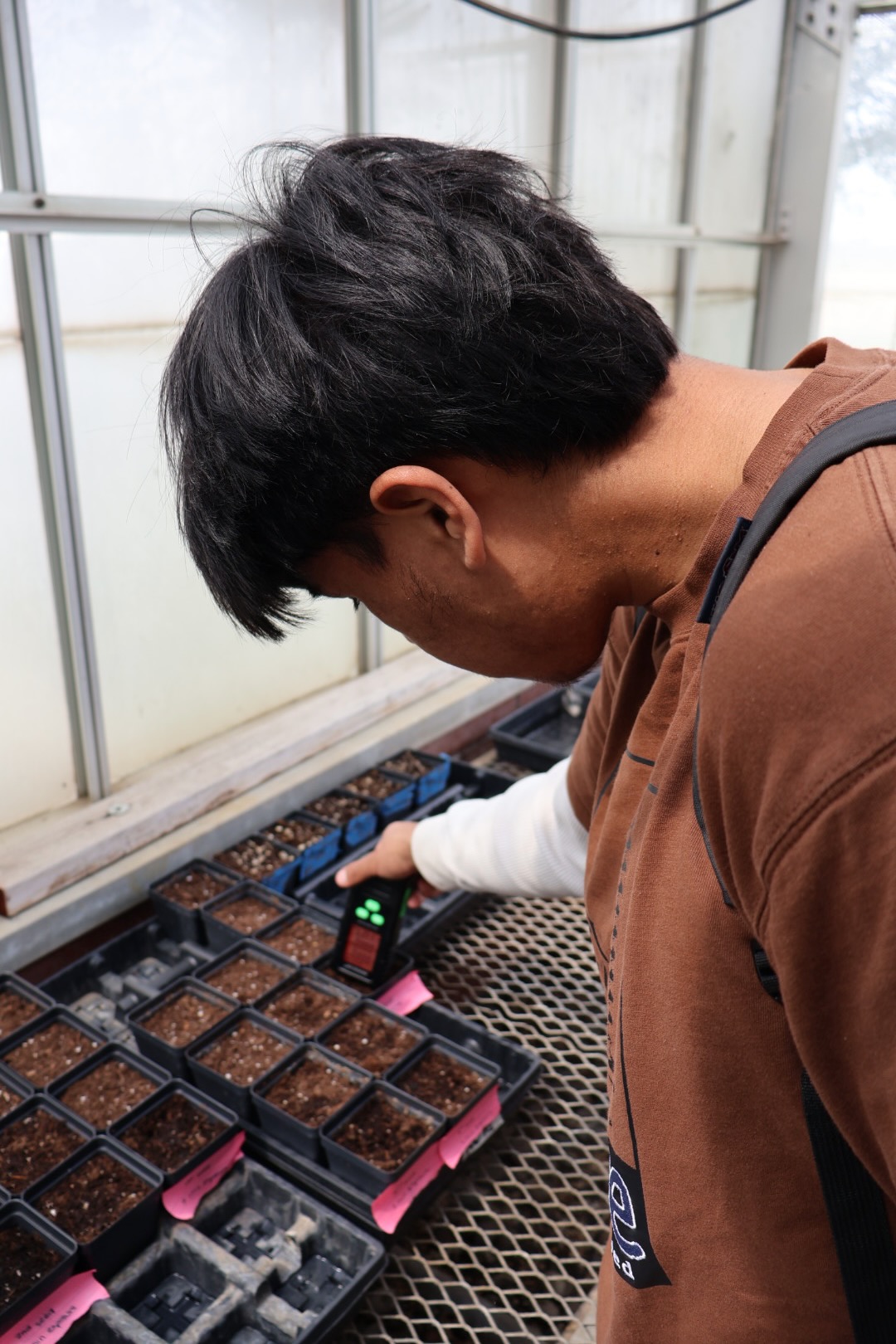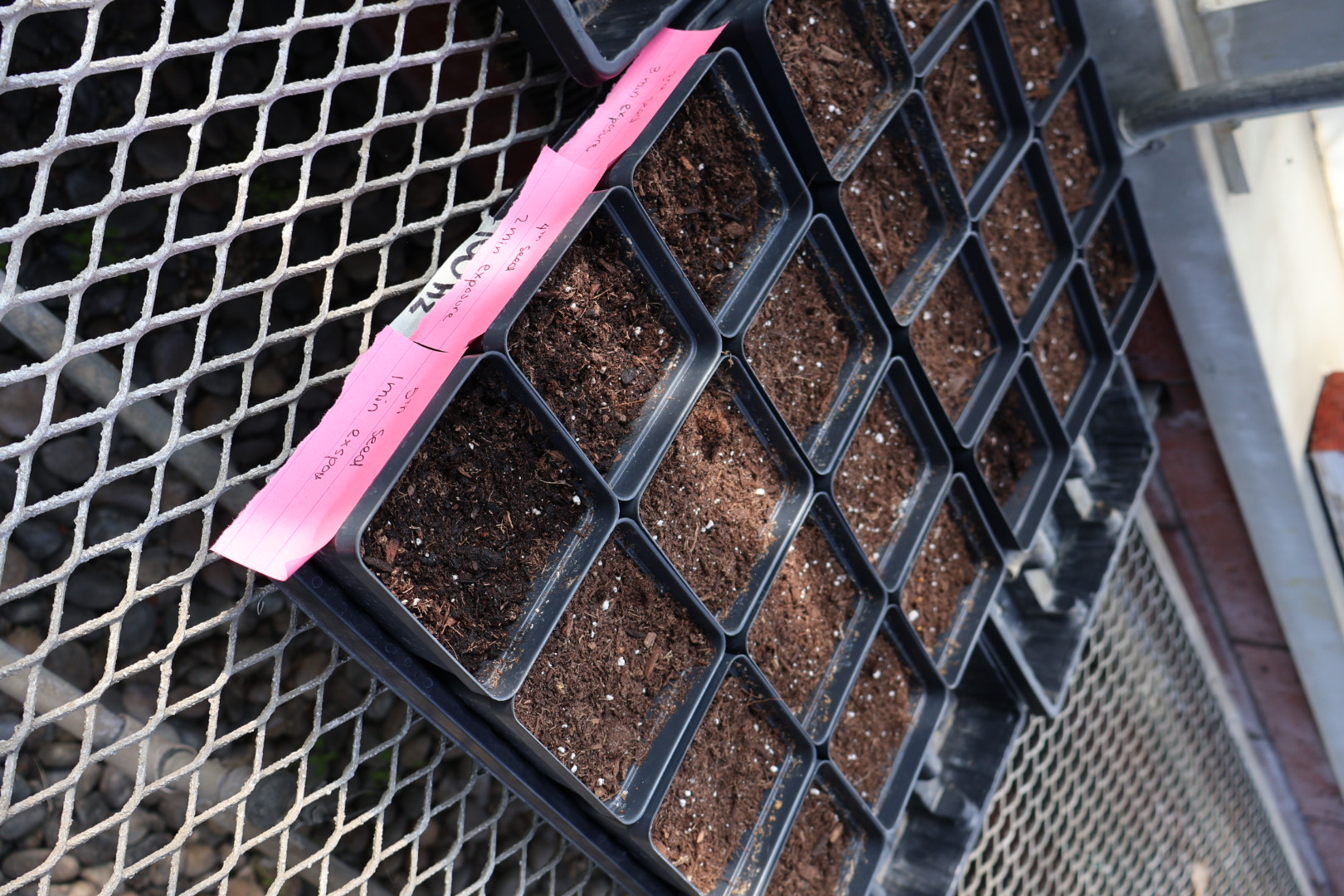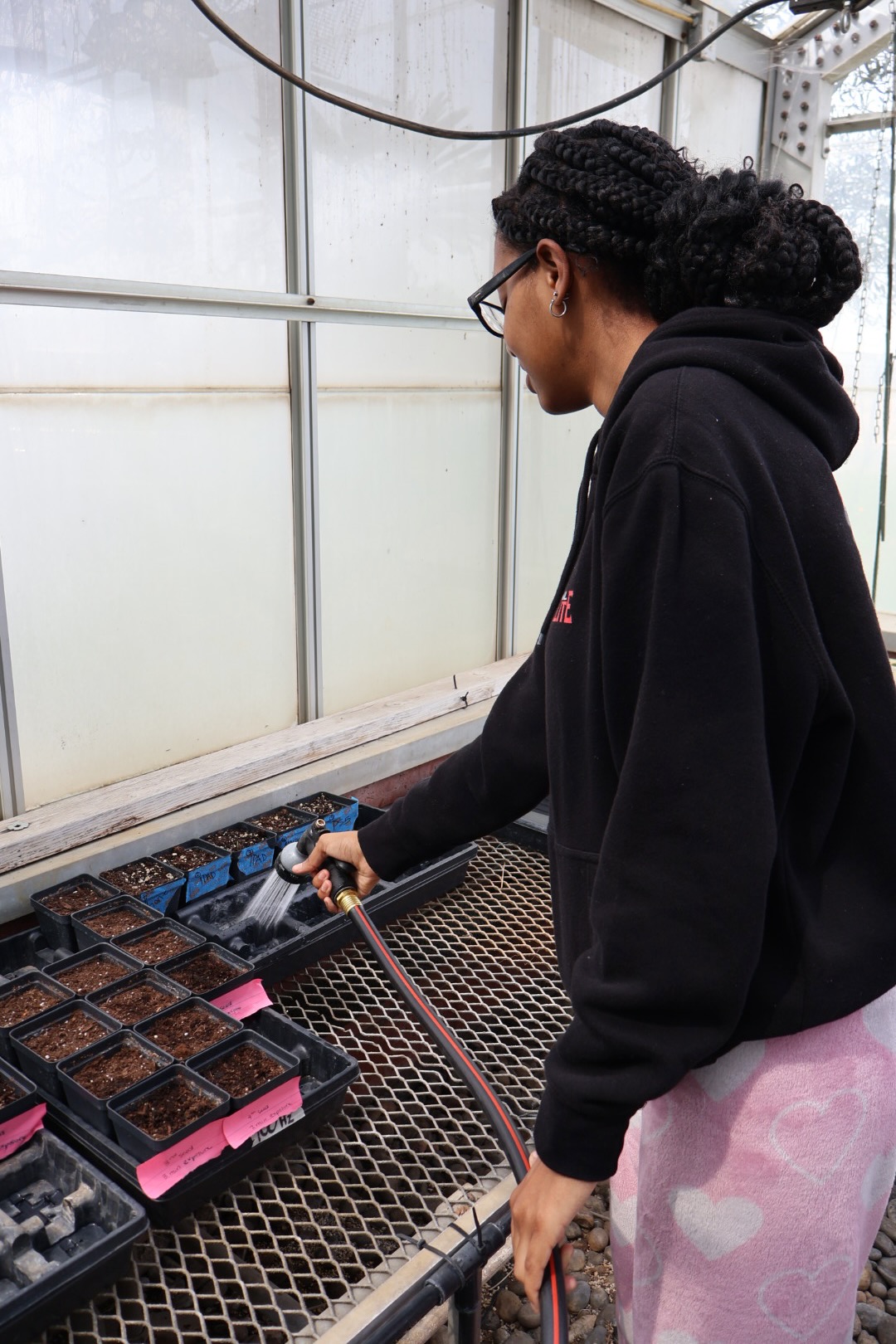Electric Magnetic Field
CSM BOND Program
Department of Earth and Environmental Sciences
CSM BOND Program
A team of student researchers, Aastria Wheatley, Adrian Galicia, and Kalisa Holmes, with the help of Joseph Gallegos, aimed to determine how the electric magnetic field affects plants and yield production and whether it will improve modern techniques.

Student researcher, Adrian, uses an EMF detector on the seeds the group has microwaved for different times (5, 4, 3, 2, and 1 minute) that have been planted.

The seeds the group have microwaved are separated into different pots filled with soil.

Student researcher, Aastria, waters the bin that holds the different pots so that each pot gets water to continue growing.
The EMF (Electric magnetic field) is an electric current of energy transferring an electric charge. These students wanted to electrify specific seeds with a transformer connected to a battery, which releases electricity. The seeds will be exposed to 75 hertz, 100 hertz, and 125 hertz of electricity and they will be planted to determine how electricity affects the seeds. They are doing this experiment twice, once inside a controlled environment (the greenhouse) and the other in nature.
Information is taken from the work done by this research group.
The design and development of this website page is credited to Kiara Moun.